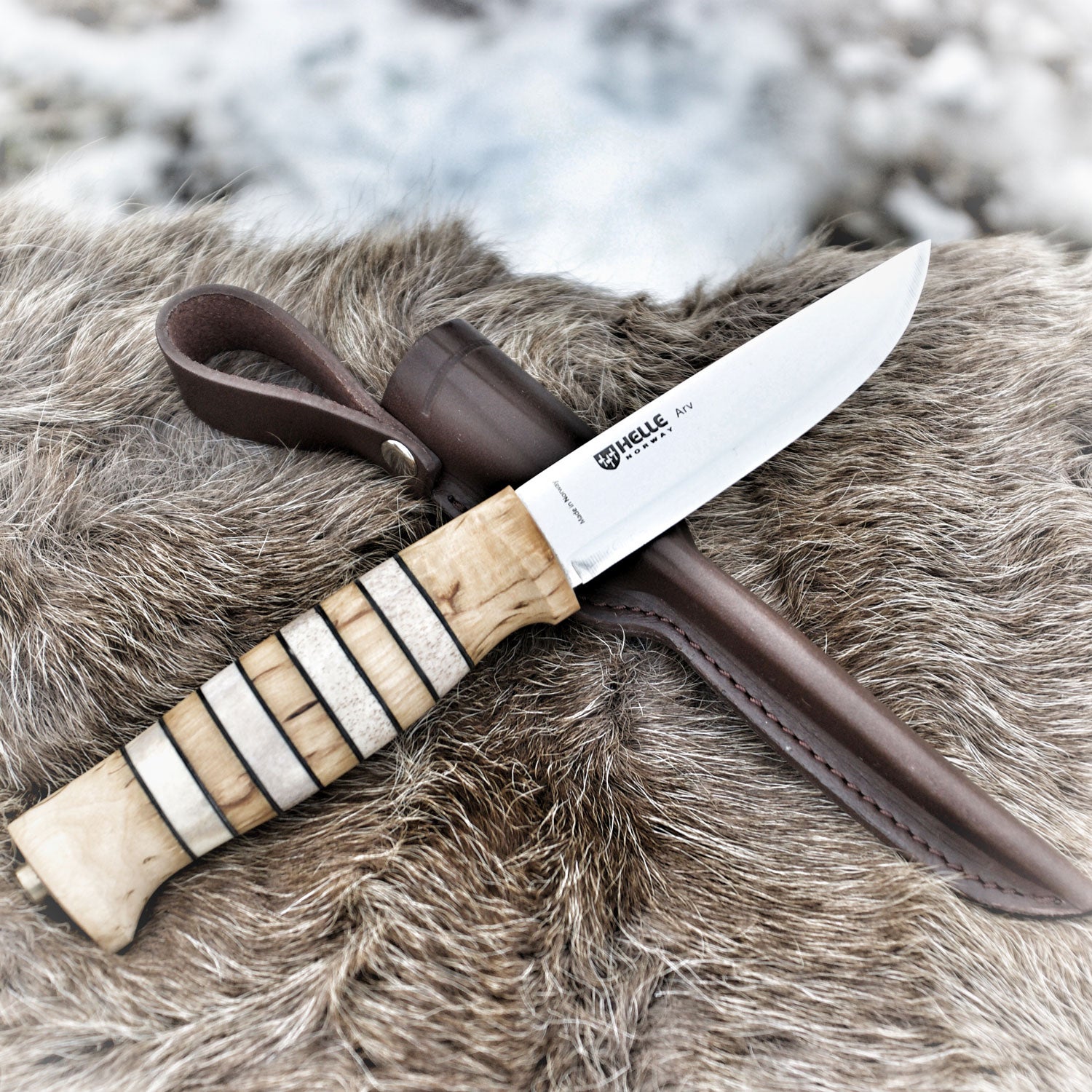The Vikings had a law that every man was required to own a weapon and to carry it with them at all times. For the wealthiest Vikings, that meant carrying a sword, axe, and helmet, but for your average farmer, it meant a large knife. Norwegians hung onto this custom long after Vikings stopped sailing the seas and many still carry a sturdy everyday carry knife in a leather sheath on their hip. In 1932, two brothers, Steiner and Sigmund Helle, set out to make a better knife for farmers—something that would look good, that would last, and that could be used for a variety of tasks.
“Farmers were poor and they could only afford one knife,” says Torodd Helle, the son of Sigmund Helle. “So that knife had to be really functional but it also had to look good.”
80 years later, the idea of making a functional knife that’s also a showpiece is still the guiding principle of . In that time, the company has become an icon in Norway and known around the world for its traditional take on knife craftsmanship. About 20 people work in Helle’s Norwegian factory, which is built over a Viking boat burial site, crafting the company’s knives by hand. Helle developed their own triple-laminated steel that sandwiches a sharp but brittle layer between two softer, more pliable layers of steel. The handles are made from a species of curly birch that's native to Norway. Even the leather sheaths are made in-house.
“Because every knife is made by hand, and because of the leather work and the individualized patterns in the curly birch, no two knives are exactly alike,” Torodd says, explaining that the men and women who build these knives get attached to their handy work. “These knives are like babies for these people making them.”
Tradition guides Helle’s production and ethos, but the company has incorporated a few new models in recent years, working with Les Stroud on design ideas and even making a series of folding knives. Torodd enjoys developing new designs but says he’ll never abandon the traditional Nordic knife or the company’s focus on handcrafted blades. Torodd says it’s that connection, between the maker and tool, that distinguishes a Helle knife from the rest.
“I'm speaking about the soul of the knife,” he says. “There’s something undefinable about these knives. It's not flawless because it’s made by hand, but it is artistic. And you can’t appreciate that until you see it first-hand.”
Here are a few of our favorite Helle knives.
Helle Harding ($140)
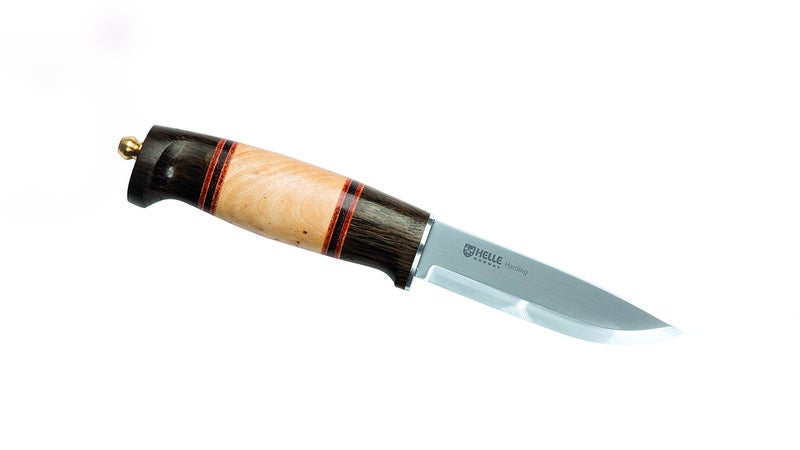
This is the classic Norwegian knife, built for hunting and good for any task you’ll encounter in the field. The is made from Helle’s own triple laminated steel, curly birch handle, and a leather sheath.
Helle Nying ($95)
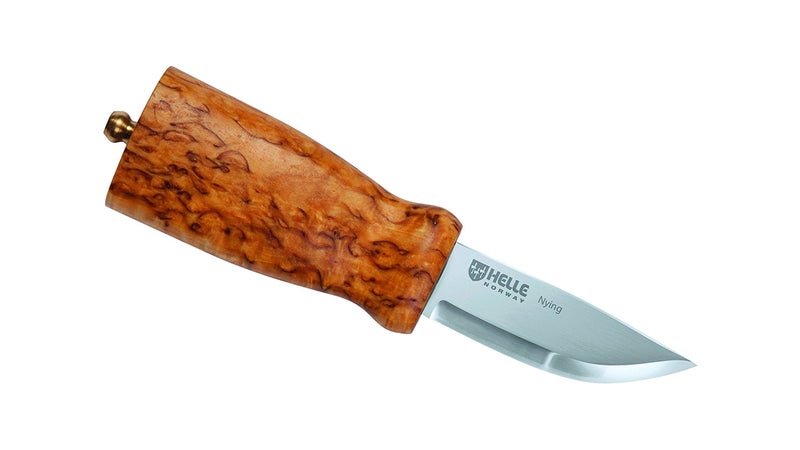
First introduced in 1975, is unique 1975 because of it’s short, stubby design, but it has become Helle’s best selling model. Think of it as Norway’s answer to the pocket knife—a small blade for small jobs, but with a big handle that’s easy to use even in cold weather.
Helle Bleja ($215)
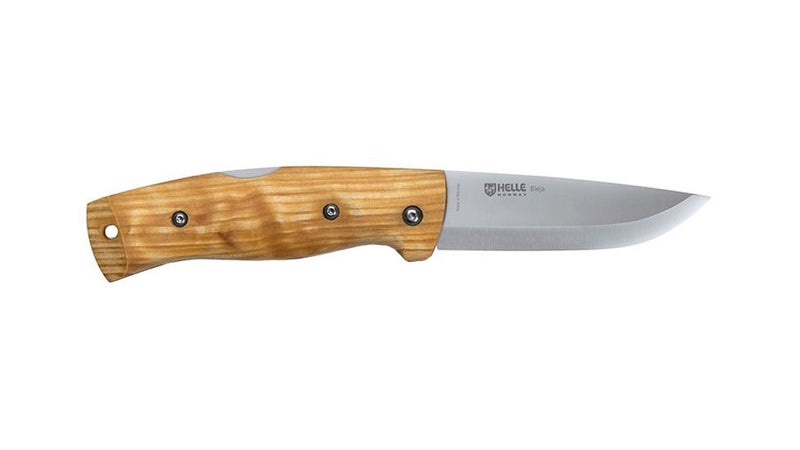
Several years ago, Helle started designing modern folding knives with their traditional materials and techniques. , which sandwiches Helle’s signature curly birch handle and triple laminate steel blade into a more compact package, is the latest. It’s built to wear in a leather sheath on your hip but it's less intimidating than a fixed blade.
Helle Mandra ($200)
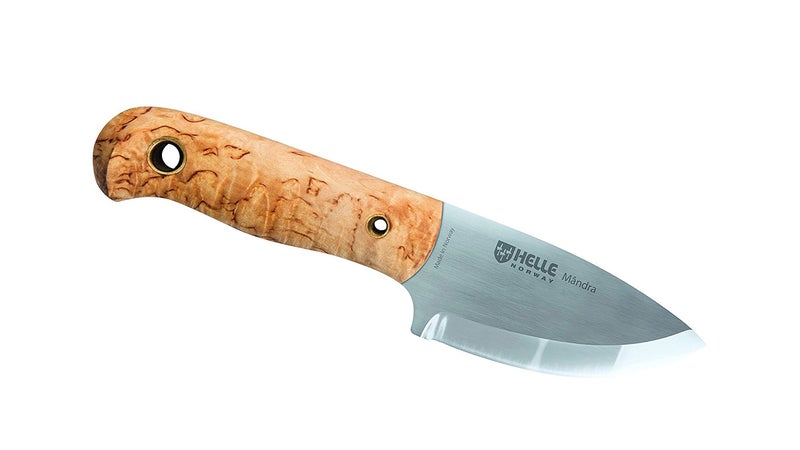
Helle began collaborating with Survivorman Les Stroud in 2005, blending his ideas of a modern, function blade with their traditional handcrafted process. is the second knife they've created together. It’s light, small, and designed to be worn around your neck.
Helle Odel ($135)
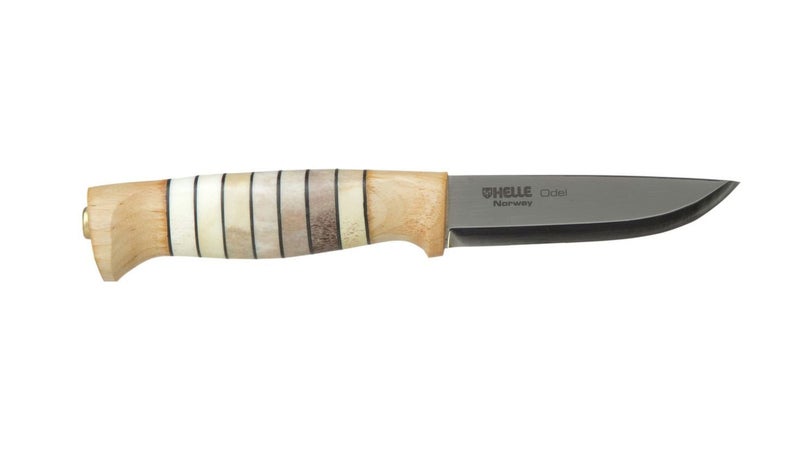
Another traditional Nordic knife, is a utility blade that’s as good for skinning game as it is whittling a stick. In addition to curly birch, the handle incorporates antler and a bit of leather. Again, it’s just as beautiful as it is useful.


